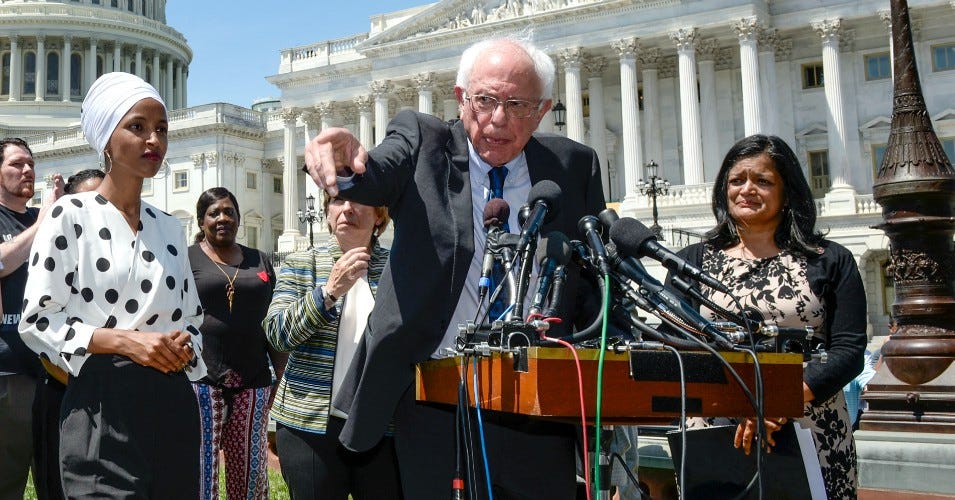
On its surface, when talking about the idea of providing all Americans with a public college education without thousands of dollars in tuition fees, many people have a knee-jerk reaction of thinking that paying for it is ridiculously impossible.
That could not be further from the truth.
The question "How are you going to pay for it?" is used by many as a "gotcha" question that is viewed as unanswerable. The costs, they argue, are simply too high for there to be a reasonable revenue source to cover the tuition fees of all Americans.
Again, this sentiment is easily debunkable.
Before we even get into the more expensive (but still financeable) plan of canceling all student debt, we need to be honest about how easy paying for tuition-free college alone would be.
Combine up the tuition costs of all public colleges and universities and it comes out to about $79 billion per year, according to the latest Department of Education data. For context, in 2017 alone Congress voted to raise the military budget $80 billion every year, putting the total military budget above $700 billion a year.
Think about that. The 2017 military budget increase alone could have paid for tuition-free college at public universities.
When analyzing the payment mechanism that Sen. Bernie Sanders (I-VT), Rep. Ilhan Omar (D-MN) and Rep. Pramila Jayapal (D-WA) have proposed to pay for tuition-free college tuition and cancelling student debt, it becomes clear how financially achievable the idea truly is.
Rep. Omar proposed the Student Debt Cancellation Act of 2019 in the House of Representatives, while Rep. Jayapal is expected to soon introduce a House bill creating tuition-free college. Sen. Sanders has proposed the College for All Act in the Senate as a companion bill for achieving both of those goals.
These bills propose a "Robin Hood Tax,” which would raise taxes on Wall Street speculation, to cover the college education of all Americans. With just a 0.5% tax increase on stock trades, a 0.1% fee on bonds, and a .0005% fee on derivatives, the Robin Hood Tax is estimated to raise $2.4 trillion over a 10-year period.
The cost of tuition-free college and cancelling student debt is estimated to cost $2.2 trillion over the same time period.
It will be interesting to see how the Congressional Budget Office’s estimated revenue totals for the Robin Hood Tax will compare to those from Sen. Sanders office, but even if the "Robin Hood Tax" doesn't meet it's estimated value, it is important to remember how interconnected the economy is.
Without the shackles of student loan debt, graduates will be able to buy homes, cars, and other consumer goods. Some of the money for cancelling student debt would be earned back by the economic stimulus of having millions of Americans now able to spend money.
Considering that the average student loan borrower is taking on $37,172 in debt, getting rid of that would free up millions of people to finally start spending money in a serious way. Those monthly loan payments of hundreds of dollars would go directly back into the economy.
A 2018 report from the Levy Economics Institute of Bard College found that cancelling student loan debt would have a positive impact on GDP growth and employment, while only a moderate impact on federal budget deficits, interest rates and inflation.
Here’s a good video explaining the study’s key points: https://www.youtube.com/watch?v=iQR6HtcqxT0
Isn’t it interesting to juxtapose what politicians pay for uncritically and what they challenge?
Provide tax cuts for the rich to the tune of $2.3 trillion over 10 years? Of course.
Raise the world’s biggest military budget by $80 billion a year, even though it is already bigger than the next 10 countries combined? No brainer.
Make college education accessible to all Americans, regardless of how much money they have? Well, we just don’t have money for that.
Despite common belief, the government paying for tuition-free public college and cancelling student debt are not economically impossible ideas.
By raising taxes on Wall Street speculation by just a fraction of a percent, trillions of dollars can be raised. Add to that the strong economic stimulus current student loan borrowers would provide if unshackled from their debt and it becomes clear that these plans could actually strengthen the economy.
Built using the Forest Map Wiki